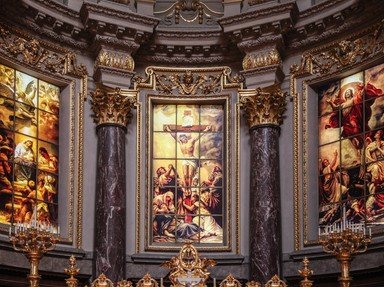Quiz Answer Key and Fun Facts
1. When Saint Acacius of Mesopotamia saw seven thousand Persian prisoners of the Romans, all of whom were starving and dying from weakness, what did he do?
2. Saint Adalbert of Prague was martyred when he tried to convert which group of people?
3. Why is Saint Agatha of Sicily considered the Patron saint of bakers and bellringers?
4. Saint Agnes of Bohemia was the daughter of a man of royalty. Who was her father?
5. Saint Aidan of Lindisfarne carried out most of his life's work in England, dying there in 651. Where, however, was he born?
6. Many of the female saints seem to have acquired that status from fending off the advances of amorous gentlemen. To make sure she would not attract similar advances, what did Saint Angela Merici do with her hair?
7. The Anglo-Saxon Saint Benedict Biscop of Britain had a famous student among those who studied at his monastery at Monkwearmouth. Who was he?
8. Three times since her death in 1879, what peculiar occurrence has happened periodically to Saint Bernadette Soubirous's body?
9. Who is the Patron Saint of Germany?
10. Saint Catherine of Sienna was a complicated, fascinating character. Today she is one of the two Patron Saints of Italy. After her sister died in childbirth and her parents tried to make Catherine marry the widower, how did she avert this?
Source: Author
Creedy
This quiz was reviewed by FunTrivia editor
LeoDaVinci before going online.
Any errors found in FunTrivia content are routinely corrected through our feedback system.

